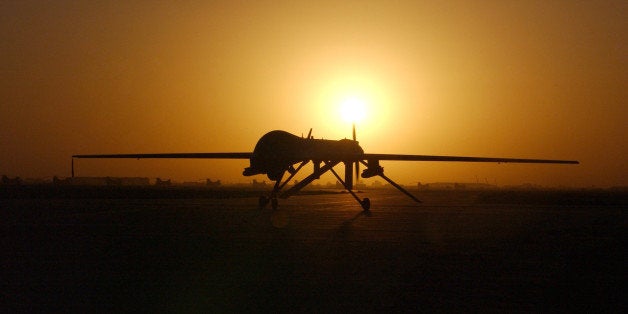
After more than two years of litigation, the U.S. Court of Appeals for the Second Circuit finally released a redacted copy of the Office of Legal Counsel (OLC) memorandum on the targeted killing of U.S. citizens that the American Civil Liberties Union (ACLU) and The New York Times had requested under the Freedom of Information Act. The memo, along with a Department of Justice (DOJ) white paper released in February 2013, provides the public with a greater understanding of the circumstances under which the Obama administration believes it has the legal right to unilaterally kill them in the interest of U.S. national security.
The news media and bloggers have covered the memo's release extensively, particularly whether the administration's position squares with the Constitution and U.S. laws. However, there are two areas that I believe are equally important that have been overlooked or ignored: the fact that the administration's purported legal justification has no effect outside the United States and the conflation of the U.S. military and the Central Intelligence Agency (CIA) in the assessment of who has the right to kill outside the United States.
Territorial Limitations of the OLC Memorandum and the DOJ White Paper
Primary legal authority over a potential crime resides with whomever has jurisdiction over the site where the act occurred. A killing in France, for instance, would be governed primarily by French law and tried in a French court. There are some exceptions, like 18 U.S.C. Section 1119, discussed in both the OLC memo and the DOJ white paper, that give U.S. federal courts jurisdiction over the murder of a U.S. national abroad by another U.S. national if the country where the murder occurred lacks the ability to prosecute the case. But in the ordinary course of events, the law that governs at the site of the crime is the law that applies in assessing criminal liability. The opinions of OLC and DOJ on the legality of a killing under U.S. law would have no legal effect on a foreign court's interpretation of its own laws as they apply to an act that occurred in its jurisdiction. In the context of the killing of Anwar al-Awlaki in Yemen, the U.S. government's view on the legality of his killing has no binding effect on whether it was legally justified under Yemeni law.
Similarly, all four of the Geneva Conventions prohibit "grave breaches" of their terms, which includes the willful killing of a person in the absence of legal justification recognized under international law. So, for instance, if a soldier from Country A shoots and kills a soldier from Country B while the two are engaged in an armed conflict, the soldier from Country A has combatant immunity, provided that he was acting in compliance with the law of war at the time, and is not guilty of murder for deliberately killing an enemy soldier. A U.S. citizen, however, would not be absolved of criminal liability for a "grave breach" just because he relied upon the Obama administration's opinion that it was legally justified any more than those who worked at Nazi death camps could rely upon obedience to orders as a defense. In other words, an international tribunal would not be bound to come to the same conclusion as OLC and DOJ on the legality of killing Anwar al-Awlaki. Clearly, courts in the United States would afford substantial weight to the official position of the administration on the issue, and the president could even exercise his pardon power to excuse someone who relied upon the administration's authorization and was nonetheless convicted, but those powers are not extraterritorial.
The U.S. Military and the CIA Are Not the Same
As mentioned before, a U.S. service member acting in compliance with the law of war has combatant immunity and would not be guilty of murder for deliberately killing. The CIA is a civilian agency, separate and apart from the Department of Defense, and in most circumstances its employees would not qualify as lawful combatants. A CIA employee tasked with conducting a missile strike has the same legal status as a National Park Service tour guide who is assigned the same job; they are both civilian employees who are not part of the military. Large portions of the OLC memo are redacted, and perhaps those missing paragraphs provide the rationale for how the CIA is supposedly legally justified in conducting drone strikes, but the fact that the administration maintains two drone programs -- one military and one civilian -- raises the question: Why?